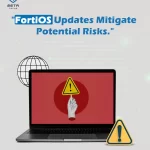Cybersecurity is paramount in today’s digital world, where businesses and individuals rely heavily on technology. It’s the practice of protecting our data, systems, and networks from unauthorized access, use, disclosure, disruption, modification, or destruction. Cyberattacks can have fatal consequences, leading to financial losses, data breaches, reputational damage, and even disruptions to critical infrastructure.
There are various testing methods the organizations depend on to identify vulnerabilities and weaknesses in systems or processes before attackers exploit them, but the two important ones are:
1- VAPT (Vulnerability Assessment and Penetration Testing)
2- Penetration Testing (Pentesting)
In this article, we will go deep into the key difference between VAPT and Pentest and how to choose as an organization between them.

VAPT vs Pentesting: Choosing the Right Security Testing Approach
VAPT and penetration testing are both valuable tools in the cybersecurity toolbox, but they serve slightly different purposes. Understanding these distinctions helps organizations choose the right approach to mitigate their unique security risks.
Scope:
VAPT offers a broader assessment, encompassing both automated vulnerability scans and manual testing by security experts. This comprehensive approach identifies a wider range of potential weaknesses across systems, networks, and applications.
Penetration testing, on the other hand, has a narrower scope, focusing on a specific system, application, or set of vulnerabilities.
Focus:
VAPT focuses on identifying and prioritizing vulnerabilities. This involves not just finding weaknesses but also assessing their severity, exploitability, and potential impact on critical assets. This prioritization allows organizations to address the most critical risks first and optimize their security efforts.
Penetration testing shifts the focus to exploiting vulnerabilities. Security professionals actively attempt to leverage these weaknesses, simulating real-world attacks to validate their severity and assess the potential impact on systems and data.
Methodology:
VAPT combines automated vulnerability scanning tools with manual testing conducted by security experts. This blended approach ensures a comprehensive assessment that doesn’t miss potential weaknesses hidden deeper within systems.
Penetration testing primarily relies on manual exploitation techniques employed by security professionals. These techniques involve mimicking the tactics and tools used by real attackers to gain unauthorized access or cause damage.
Benefits:
VAPT offers a comprehensive picture of an organization’s security posture, helping them understand their overall risk landscape. It also provides valuable insights into potential attack vectors, allowing organizations to proactively address those specific risks. Additionally, VAPT helps prioritize vulnerabilities based on their severity and exploitability, enabling focused remediation efforts.
Penetration testing, on the other hand, validates the severity of identified vulnerabilities by actively attempting to exploit them. This helps organizations understand the real-world consequences of not addressing vulnerabilities and allows them to test the effectiveness of existing security controls. By simulating real-world attacks, pentesting provides a deeper understanding of the potential impact attackers can have, empowering organizations to develop more comprehensive incident response plans.
Choosing the Right Approach:
The choice between VAPT and penetration testing depends on your specific needs. If you need a broad assessment to identify and prioritize vulnerabilities across your entire IT infrastructure, VAPT is the ideal choice. However, if you want to validate the severity of specific vulnerabilities or test the effectiveness of your security controls, a penetration test is a better option.
Often, organizations benefit from a combination of both approaches VAPT for a comprehensive overview and pentesting for a deeper dive into specific vulnerabilities or systems.
By recognizing these key differences in scope, focus, methodology, and benefits – you can make an informed decision about which testing method best suits your organization’s current security needs. Often, a combination of both VAPT and pentesting can be the most effective strategy, offering a comprehensive overview alongside a deeper dive into specific vulnerabilities. Remember, proactive security testing is an investment in your organization’s resilience against ever-evolving cyber threats.
Best VAPT Testing Companies in the UAE
Related posts:
 Fawry comments on cyber attacks and data leaking
Fawry comments on cyber attacks and data leaking
 Effective Policy for data retention policy best practices
Effective Policy for data retention policy best practices
 the Latest fortinet vulnerability 2024
the Latest fortinet vulnerability 2024
 What Is ISO 27001?, Core Principles, Benefits, and Requirements
What Is ISO 27001?, Core Principles, Benefits, and Requirements
 How to save Configuration in Fortinet Firewall?
How to save Configuration in Fortinet Firewall?

